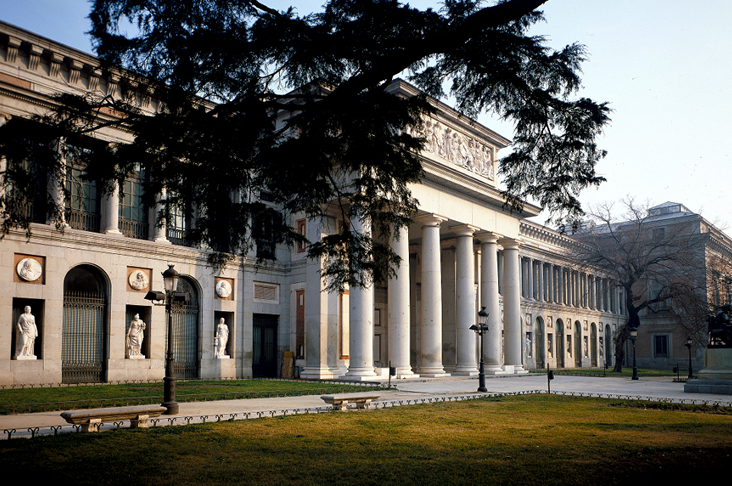THE HISTORY
 |
| The Prado Museum |
The city of Madrid with 3.166 million inhabitants and with a metropolitan area of approximately 6.5 million is located in the heart of the Spanish Peninsula and is the capital of the European country of Spain.
Madrid offers many features and it can be said that is a cosmopolitan city and an important business center of southern Europe, it has the headquarters for the Public Administration, government and parliament of Spain, and is the home of the Spanish Royal Family. Madrid also plays a major role in both the banking and industrial sectors and this gorgeous city is also characterized by intense cultural and artistic activity and a very active and legendary nightlife.
It can be said that is essential to visit the historical places of Madrid like The Prado Museum the main Spanish national art museum, el Retiro Park a green oasis in the centre of Madrid that has 125 hectares and safeguards over 15,000 trees or Gran Via the busiest and most important street located in central Madrid.
THE FOOD
 |
| Cocido Madrileño |
In Spain, there are some of the best restaurants in the world and it is the origin of one of the main gastronomic trend in the whole world: the small plates. We can say that Spain is a country that has taught foreigners what are churros, chorizo, patatas bravas or paella in all its variations; It must be said that it is, clearly, one of the most versatile countries in the world in terms of gastronomy.
The most typical food, such as Serrano ham, paella or potato omelette, is a sensation throughout Europe and due to this the Spanish cuisine has gained followers in Europe and has already become the favorite of the 31% of travelers on the continent positioning itself as the second most preferred one.
We can say that the gastronomy of madrid has the culinary traditions of the initial population when King Felipe II created the capital, and later of the towns of his own province that were contributing their characteristics to the gastronomy of the city. It is common to see how the typical smell of the cuisine of Madrid is of the churros (made in the churrerías), the cocido madrileño, the tortilla de patatas or the calamari sandwiches served in typical bars.
THE NIGHTLIFE
 |
| Malasaña Neighborhood |
The nightlife of Madrid, as in almost all of Spain, is characterized by the nomadic character of the inhabitants, who do not spend much time in their favorite place and keep changing places. This is what gives the peculiar atmosphere to the streets and causes the bars to ceaselessly come alive, all this happening throughout all the morning, until it is time to have breakfast at any early bakery or cafeteria.
From the Puerta del Sol to the Plaza de Santa Ana, passing through Huertas street you will find a lively area, where students, help to create a fun atmosphere. You can start the evening by eating tapas or something typical of any region of Spain in one of the many restaurants on Calle Huertas or in the Santa Ana breweries; or let you surprise with some representation in the theater cafes, coffee shops or bars. In this area you can stay well into the night without going too far, just jumping from local to local, as the offer is very broad.
Starting from the Plaza de Santa Bárbara you will find a number of tapas bars, breweries, pubs and cafes of great animation. The most crowded areas are those of the streets Campoamor, Fernando IV, Santa Teresa and Barquillo. In Bilbao, around the outskirts of Fuencarral and San Vicente Ferrer there are a lot of places like in the previous one, some with performances, and here is one of the most famous nightclub in Madrid the Barcelo Theater former Pacha.
In Argüelles and Moncloa, in the University City area, there are plenty of places to eat, drink or see. In this area you will find much of that atmosphere that has made the nightlife of Madrid so famous and is full of university students.
 |
| Calvario Street |
THE DIVERSITY
Madrid has many attractions, especially because it is a cluster of contrasts were you cant get bored. You can find for example streets that mix the classic with the modern, or you can simply start walking down a street and finish it thinking that you moved to another one.
Furthermore throughout the years, all kinds of communities and ethnic groups have settled, and these have added to the enrichment of the city. Neighborhoods such as Lavapies, Malasaña or Usera are clear examples where we can find social centers, gastronomy of all kinds Ethiopian, Indian, Oriental... and above all, we have the opportunity to know and discover these cultures and their peculiarities, all concentrated in the same City!
Comments
Post a Comment